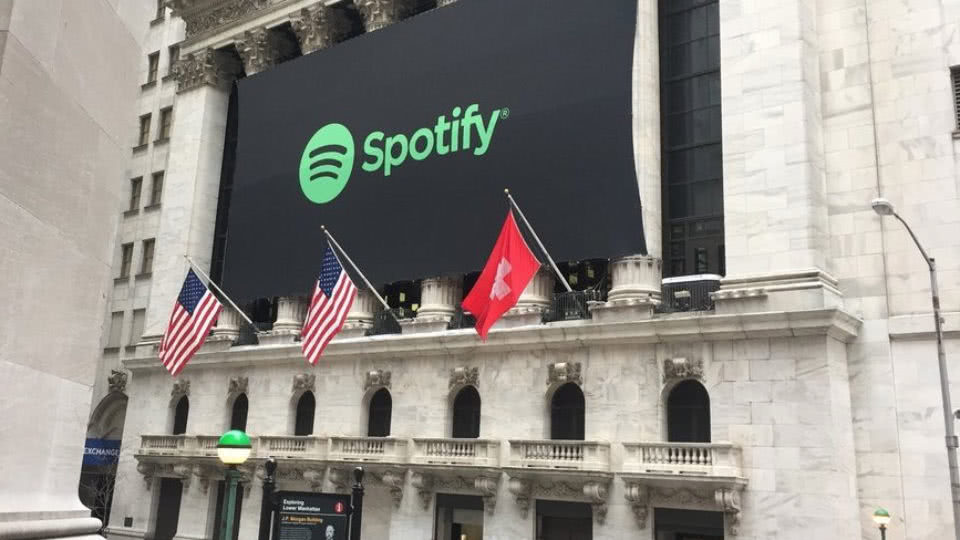Labels won’t die with Spotify changes, but they will change forever

I feel so lucky to be part of the music industry in 2018. Global revenue is approaching an all time high, the old white man culture of misogyny and manipulation is dying out, and artist managers and artists have more leverage and influence than ever.
This morning’s announcement that Spotify will be allowing artists to upload directly to Spotify in reality, doesn’t change a whole lot right away. Artists have been able to have their records featured on every streaming service for less than $100 via services like TuneCore for years.
All this change does is save artists that fee for third-party distribution sites, however they still need to get their music up on Apple, Google, etc. – so until those retailers follow Spotify’s lead, services like TunCore will have their place.
So what will change? Below I’ve outlined the natural progression the music investors (i.e. labels) will take learning from how professional investors work in other sectors.
The current climate
At the moment there are four types of deals (with variations of them). An artist can enter into one of the following deals with a label:
1. A simple distribution deal
The artist pays a company 20-25% to ensure all their records are up on relevant digital retailers and streaming services.
In my view, unless your distribution company is giving you funding, extra label services or exciting leverage opportunities (like festival spots etc.), there is really no point doing a distro deal like this.
You may as well just pay the $100 to TuneCore and keep your 20-25%.
2. An indie label deal
When they work, these deals are ideal for all parties, in my opinion. Usually the terms are very favourable to the label (unlike the BMG model which I’ll explore below), however the artist usually receives a level of service, care or opportunities the big majors often can’t.
For example, if you sign to Dew Process – there’s a damn good chance you’ll end up on Splendour In The Grass, or if you signed to UNIFIED Music Group, same goes with any number of their festivals or tours.
These opportunities (and teams of passionate staff) I feel, are still are still the ideal in this current climate.
The risk here is obviously signing to an indie label and not getting any love. You’re stuck with a shit deal and a disengaged team – but this could just as equally happen at a major.

Splendour in the Grass, 2017
3. A major label deal
Terms are usually very favourable to the label, and they often ask for a lot more rights than any of the other three options.
Now this might seem bad on paper, but it’s not always doom and gloom. If a major throws everything they have at your career, both in terms of resources and finances, you’ll never die wondering. The challenge is working out how much of a priority you’ll be in the system before you sign.
4. “The BMG Model”
I put this in quotation marks because I’m sure there are other companies doing what BMG are doing, I’m just not fully across the details.
Basically the general BMG Model is; “We will act as a full service label, like the majors would, but we only take 25%, and you own your own master!”
Crazy right? They take the fee of a distributor but offer the service of a major label.
This model is perfect for most artists if BMG are full invested in your career. The flip side is that they might not have leverage opportunities that smaller indies have with their festivals and touring etc., but they have their own perks that the indies don’t, (namely the international network they’re plugged into).
They arguably have the muscle of a major but the operations of an indie, so if you can find a deal that makes sense for you with BMG it’s probably the best option, especially if you’re more established and don’t need local leverage opportunities.
However it’s never a foregone conclusion with BMG, despite how amazing it is on paper. Remember you need to find out how invested the team is before you sign. I’d take worst terms with a major label who is more invested in my artist than a half-interested BMG any day.

BMG signing Dead Letter Circus at their Sydney offices
So what will change?
Well firstly, I think the straight distribution deal is dead, I’m surprised it hasn’t died off a long time ago. You don’t need to give someone 20% of your income just to have it up on a store anymore, Spotify have just put a massive torch on that today.
Secondly, I think indie labels will always have their place as long as they continue to be tastemakers for fans and maintain leverage assets for artists – as companies like UNIFIED are doing.
In fact, these companies are probably more valuable than ever. This indie label set-up, which uses its brand and other assets as leverage, will probably be the only ones that can get away with signing artists to old model contracts and thus having a better chance of surviving long into the future.
Thirdly, major label deals are going to have to change, and change fast.
Let me be clear, they’re a long way from going broke. They have millions of copyrights and back catalogue that they are monetising every day as you stream Nirvana, Silverchair and Biggie Smalls.
Iconic masters like that generate millions of dollars and don’t cost majors a cent, they just live on the streaming services while the money pours in with every play.
However, for new artist signings they are going to have to take one of two approaches;
1. Switch to the “BMG model” for their priority artists
The reason I say “priority artists” is because I’m not convinced the BMG model (or any current label model) is scaleable.
Look at any record company with a big roster, there are a handful of artists that get a lot of love from their record company, and the rest are given the scraps of the resources.
The future will see record companies taking the least share from artists they offer the most service to. Sounds counterintuitive doesn’t it?
However it makes sense when you think about it like this: the more they invest in an artist, the more likely they are to succeed. Therefore the more money will flow through that deal and the less of a percentage they’ll need to take to be a profitable business.
This, coupled with the fact they have massive revenue flowing from back-catalogue means there will be less P&L pressure to ask for over-the-top rights from local artists as A&R managers look to create future iconic masters with new talent.
1. Switch to a “Venture Capital Model” for their wider roster and investments

Most of the time an artist manager working with a developing artist doesn’t need all the resources of a major label.
In fact, sometimes you just need money to get your songs and other assets created. So, I believe major labels in the future will stop pretending to be all things to all artists (it’s impossible, no rational manager can expect that of them) and become more like silent investors of masters at scale.
To illustrate how this might work, have a look at a made up artist named Sarah working through this future system:
- Sarah received $10,000 for 25% in her master for a stake in two EPs from a major label. This is distinctively different from a a ‘signing’ as she’s not signed to the label, they just own a percentage of her work. This money comes with no label services or resources from the major, simply a financial investment. Sarah doesn’t have any other labels interested and needs the capital, so she takes the deal.
- After the first EP drops, she gets a whole lot of success on radio and wants more money for the second EP to up the production values.
- She goes back to her label and strikes a deal for $30,000 for an extra 10% on the second EP master. The label now owns 25% on the first EP and 35% of the second EP. Again, no label services are offered to Sarah.
- Sarah later decides she wants to turn the second EP into an album, however the person who initially invested in her at the major no longer works there and the new A&R doesn’t want to invest further into the record.
- Sarah goes to a second major and strikes a deal where she gives them 30% of her album (which was previously going to be her second EP). This means the first major is a silent investor at this point (and always was), not a record label as we know it, and will continue to receive its share of 35%. In return for the 30% Sarah has given the second major, they are offering global label services + a further $30,000 to finish the record.
In this scenario, Sarah is left with a 35% ownership of her album (35% to the first major and 30% to the second) and has raised $60,000 to make it.
Not bad considering that if she went via the old model she’d probably only own less than 20% of her record and be stuck with a team that doesn’t believe in her music.
It’s also a huge win for the first major too. They have allowed their artist to go find a team that believes in her (even if it’s a competitor) and they don’t have any overheads or ongoing expenses on the record that they own 35% of.
This might sound complicated, but it’s a simplified version of how a venture capital works. The artist in this scenario is the CEO and the major labels are the various competing venture capital funds who are all investing in her business.
Well done Spotify on today’s changes, they are moving the industry forward and it’s very exciting.
This article originally appeared on The Industry Observer, which is now part of The Music Network.


































